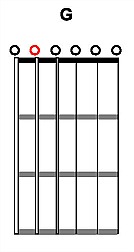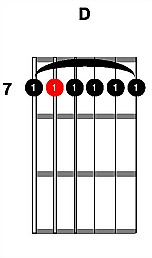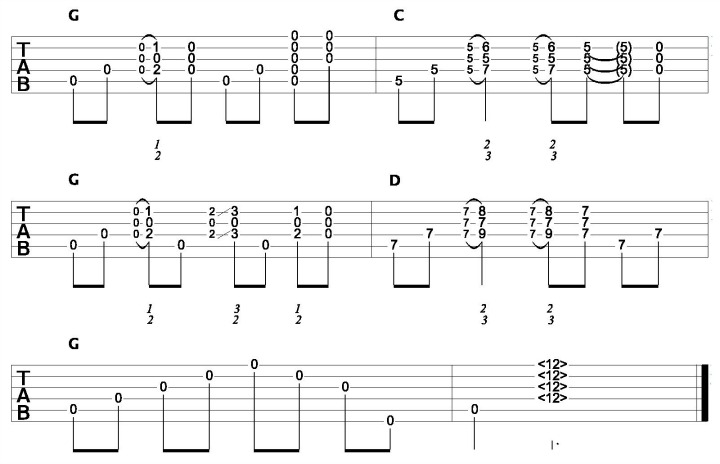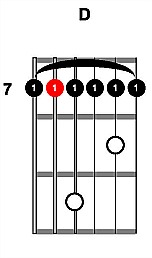Different Ways To Play Your Guitar - Alternate Tunings For Guitar
A different way to play your guitar is to use an alternate tuning.
But what exactly is an alternate tuning and why use it?
I think I can safely assume that you are aware of the standard tuning for guitar.
From low to high string we have: E A D G B E
Alternate tunings are when you simply alter or change the tuning of some of these strings.
There are many different alternate tunings for the guitar, but today we are going to focus on the “Open G” tuning.
Here is the open G tuning from the low to high string: D G D G B D
Have a listen to this tuning below:
I have highlighted the strings that have been altered in red. This is a good alternate tuning for guitar to start with, as it will still be somewhat recognizable to you because the 4th, 3rd, and 2nd strings don’t change from standard tuning.
The reason why this is called open G tuning is because when you strum all the open strings together they sound out a G chord. (G chord is made up of G, B, and D notes).
To tune your guitar like this, use your tuner as you would normally, only tune the 6th string to D, the 5th string to G and the first string to D.
If you want to use your ear to alter the tuning of the guitar to open G then follow these steps:
- Tune your 6th string down a tone to a D. Check the tuning with the 4th (D) string
- Tune your 5th string down a tone to a G. Check the tuning with the 3rd (G) string
- Tune your 1st string down a tone to a D. Check the tuning with the 4th (D) string
Ok, so why go to all this trouble, the guitar is challenging enough to play as it is right?
Well, playing your guitar in different ways like this inspires new musical ideas. Alternate tunings make the impossible, possible. Chord forms that you could not play in standard tuning, or were at least very difficult to play, become easy to execute. You are also given access to non standard open strings to drone out where necessary.
The proof is in the pudding though, so let’s explore the open G tuning for guitar.
Ways To Play Your Guitar In Open G Tuning
As I mentioned earlier, when you play all the open strings together in an open G tuning, you get a G chord. This extends to fretted notes as well. If you bar a single fret you will get a chord.
How easy is it to play bar chords now?
Here are the positions for the G, C, and D chords in open G tuning, including the octave of the G:




* I have highlighted the root note of each chord in red. You can strum the chord from this string if you like, although all 6 strings will sound great too.
A standard chord progression like this:

Can now be played like this:

Being able to play bar chords on the guitar in this way frees up your 2nd, 3rd, and 4th fingers which can then add notes to create interest like this:

Trying to play the above chord progression with the embellishments would be very difficult to do on a guitar with standard tuning. Even if you could, it wouldn’t sound nearly as good as it does in an alternate tuning like open G.
Here are the chord shapes, including the notes I added as embellishments in the above example. (Embellished notes are in white)



Alternate tunings like open G tuning are also great for slide guitar playing.
Check out this example of an excerpt from a blues using a slide in our open G tuning:

The fact that we can play our bar chords in a single fret with this tuning works out very well for the slide, which can only play in one fret at a time. While slide guitar playing can be done, and is done in a standard tuning, it is more often used in an open tuning like G because of the added possibilities that become available.
The table below gives you some other common alternate tunings for the guitar:
| Name Of Tuning | Tuning (From Low To High String) |
|
Standard |
E A D G B E |
| Open C | C G C G C E |
| Open D | D A D F# A D |
| Dsus4 | D A D G A D |
| Open D Minor | D A D F A D |
| Open G | D G D G B D |
| Gsus4 | D G D G C D |
| Open G Minor | D G D G Bb D |
| Open A | E A C# E A E |
While all these tunings will give you a bunch of different ways to play your guitar, it is probably best to stay in open G to begin with, as constantly changing tunings when they are new to you can be confusing to say the least.
I will leave you with some songs that I strongly recommend you check out and learn. These are all in an open G tuning and will help you become familiar with this alternate way of playing your guitar.
- Start Me Up - The Rolling Stones
- Honkytonk Women - The Rolling Stones
- Walkin’ Blues - Robert Johnson (Check out Eric Clapton’s version on his unplugged album)
- Daughter - Pearl Jam
- Last Goodbye - Jeff Buckley
- Bad To The Bone - George Thorogood
- Thats The Way - Led Zeppelin
Check out these lessons for beginners to fingerstyle guitar